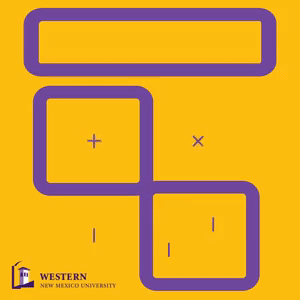The Gila/San Francisco Water Commission discussed letters of support for projects to use the water and/or funding from the Arizona Water Settlements Act.
The Act allocates 14,000 average annual acre-feet of water from the Gila and San Francisco rivers. Funding of $66 million is available for projects utilizing or not using the water. An additional $62 million is available on a construction-cost basis for a New Mexico Unit or units to utilize the water.
The Interstate Stream Commission has created a two-tier application and evaluation process to determine which proposed projects meet a water supply demand in the four-county region of Grant, Catron, Hidalgo and Luna.
Usually, the GSFWC meetings are recorded and transmitted by Community Access Television of Silver City, but this morning an audio board failure prevented the recording of the session.
Discussion ensued on entities that had requested a letter of support for their proposed projects, which had passed the Tier-1 process and were slated to continue to the Tier-2 process and evaluation. The Tier-2 process requires more detail in the application. For those, which passed the Tier-1 process, the deadline for submission to the Tier-2 evaluation, is Dec. 14. Entities would like to include the letters of support with their submittals.
Anthony Gutierrez, representing Grant County, spoke about the Grant County proposal for a Twin Sisters Reservoir to reuse treated effluent from the Bayard Regional Wastewater Plant for recreation and recharge for the Santa Clara and Bayard wellfields. The proposal will also use runoff from the intermittent Twin Sisters Creek to slow down and store water to prevent flooding in Santa Clara.
"Commissioner Gabriel Ramos is the lead for the county on this project," Gutierrez said. "I heard this morning that the Santa Clara Board of Trustees approved the proposal at its meeting last evening."
Topper Thorpe, representing the Gila Basin Irrigation Commission asked if the reservoir is tied into the regional water plan proposed by the town of Silver City.
Gutierrez said the regional water plan was proposed to the Grant County Water Commission, made up of mayors of the municipalities of Silver City, Santa Clara, Bayard and Hurley, as well as a representative from Grant County.
"The reservoir is not really a part of the regional plan," Gutierrez said. "However, it will enhance recharge to the benefit of the communities in the regional water plan."
Tom Bates, representing the city of Deming and Luna County asked how expensive the proposal is.
Gutierrez said about $10 million, but the county would also be leveraging funding outside the AWSA funds.
Gerald Schultz, who attends the GSFWC meetings representing the Black Range Resource Conservation and Development District, but is not a GSFWC member, said he remembered hearing at a Grant County Water Commission meeting that the reservoir might later be part of the regional water plan.
Gutierrez said the town of Bayard and Santa Clara had concerns about the impact the reservoir would have on recharge of their wellfields, but a consultant allayed their concerns, because he believes the excess water will benefit recharge.
GSFWC members moved to send a letter of support to Grant County.
Vance Lee, GSFWC chairman, pointed out that each proposal would be discussed on its own merits and a decision would be made whether to write a letter of support from the commission.
Thorpe presented an overview of the GBIC proposal, which he said would likely be a New Mexico Unit.
"There won't be a dam, but storage, which could include injection of water into the ground, will take place in several locations," Thorpe said. "Three existing earthen diversions would be replaced by permanent structures. The project will evolve to meet National Environmental Protection Act requirements, and Mother Nature has to participate. We will meet the needs of endangered species and provide a more dependable supply of water to agriculture. We are also considering different crops to replace pasture."
Schultz asked if the Tier-1 application listed impacts on Grant and Hidalgo counties were negative or positive.
Thorpe said he interpreted them as positive, because the plan would allow water to be in the Gila River all year and not dry up in spots, as is the current case.
A letter of support was approved.
Bates asked if both types of funding the $66 million and the $62 million could be used for the GBIC project.
Mary Reece of the U.S. Bureau of Reclamation said the ISC has said a combination of the funds can be used, although the $62 million can only be expended on a construction-cost basis.
The next proposal discussed was a Deming project to create a diversion on the Gila River and pipe the entire allocation of the water to the Peru Mill Site near Deming. The water would be available to anyone who wanted it.
Bates said the concept is to be a unit and to help people along the way.
Thorpe said a pipeline starting in the Cliff-Gila area might be of concern to those who depend on the water.
Lee said he believed those in the Virden Valley might also be concerned.
The commission's first decision was to table it, until Gutierrez pointed out that tabling it would not benefit the proposer, because a December meeting would be after the Tier-2 deadline.
Reece pointed out that the 14,000 acre-feet of water is allocated on the basis of 140,000 acre-feet over 10 years.
"It depends on where it lands and where it is stored, as well as the timing," she said. "From the San Francisco River, 4,000 average annual acre-feet can be taken, but it can be up to 64,000 acre-feet in a year, if Consumptive Use and Forbearance Agreement parameters can be met."
Later in the meeting, Gutierrez pointed out that the Deming proposal was similar to other proposals, which asked for the entire 14,000 acre-feet, and he believed the intent was to make sure the water stayed in New Mexico.
After that comment, commissioners agreed to support the project.
A Deming proposal to drill deep wells to determine the quantity and quality of water available underground did not pass Tier-1, but was set aside for future consideration by the ISC.
Archie Payne, representing Virden, said: "Deep wells are important. We need to know how much water is underground and whether it is brackish or good." He said a project in Animas showed the water flowed from southeast to northwest and determined the quality of the water.
Lee described a Hidalgo County proposal to establish a diversion at the confluence of the Gila River and Mogollon Creek, with storage at the mouth of Schoolhouse Canyon. "On the way, it could be let out to Gila Valley users or piped to Silver City or Deming. The drawback is the storage area is not as large as we would like."
Commissioners moved to support the project, as well as the relining of the Sunset and New Model ditches in the Virden Valley.
Also approved for a letter of support from the GSFWC was a proposal to reline ditches in the Luna Ditch Association in Catron County.
Bill Webb of the San Francisco Soil and Water Conservation District explained a Catron County watershed restoration proposal.
"It is large scale and some is in roadless areas of the Gila National Forest, whereas other parts are on private land," Webb said. "Mostly it would be prescribed burns on the roadless areas and pushing of juniper where allowable by machinery. Hopefully, we would see increased water retention to bring dry streams back to life. It is also possible to generate additional funding, if the project is approved."
A letter of support was approved.
Gutierrez said he believes southwest New Mexico, which is already regionalized for economic development, should regionalize for negotiations on use of water. "We could go to the ISC and say this is what we have been able to come up with for ranking the projects that pass the Tier-2 process."
He also said other potential funding for projects is available and would be beneficial to the proposals, especially if "we can identify other potential funding sources for our projects."
In addition to names presented to New Mexico First by Grant County and Luna County for people who represent various stakeholders in the counties for participation in the Town Hall in February, Bates asked that Catron and Hidalgo County also present names, "so the Town Hall is represented geographically, as well as by interest."
Reece said funding opportunities are available for Water Smart Grants through the BOR. The Phoenix office would like to offer in Silver City a workshop on the grants for those who are interested. Commissioners agreed that many would be interested. Reece said it would likely be the first week in December.
Schultz reported a new state engineer for New Mexico has been appointed by Gov. Susana Martinez. He is Scott Verhines of Albuquerque.
Schultz said he had toured the area in North Dakota devastated by flooding on the Souris River, which comes out of and flows back into Canada. It was described as a 100-year flood, and had on one day a flow of 450 percent of the mean flow.
Flooding also occurred on the Missouri River from Montana to Missouri. At one point the watershed received almost a year's worth of rain in late May, in addition to a 212 percent of normal snowpack.
"These extreme events, including the extreme drought in the Southwest, are a challenge to researchers," Schultz said. "Any future models will include risk management to decide which is the better course to take in the case of records being not only broken, but shattered, according to the North Dakota State Engineer."
The Gila/San Francisco Water Commission will not hold a meeting in December. The next meeting will take place at 1 p.m. on January 10, a change of time and date, due to several members being out of town on the regular date. The session will be held at the Grant County Administration Center.








